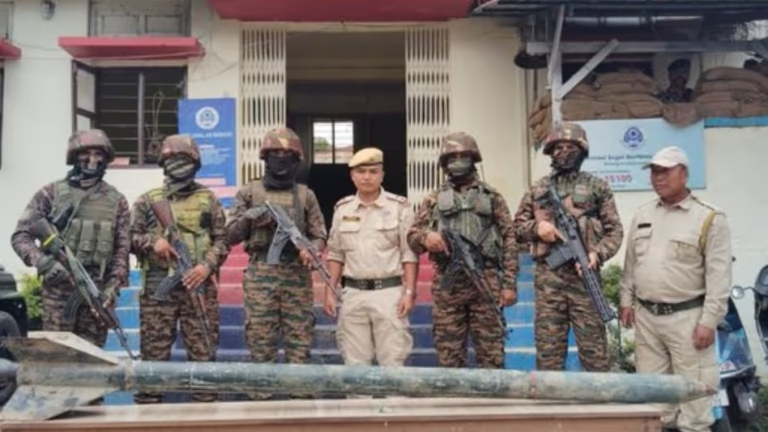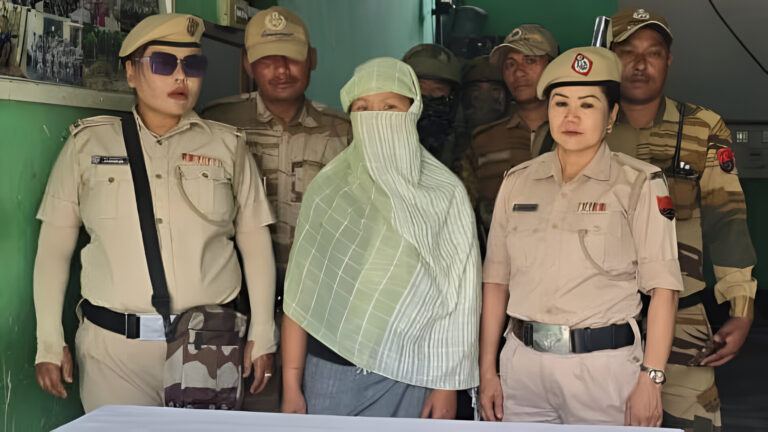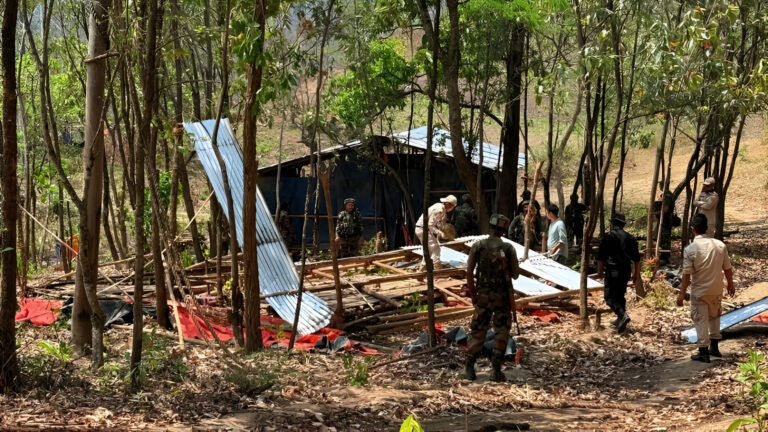Heroin Worth Over ₹4 Crore Seized in Meghalaya — 3 women’s from Manipur Arrested
Short Summary
Police in Meghalaya’s East Jaintia Hills intercepted a vehicle at the Umkiang patrol post and seized nearly 1 kg of heroin (reported as 961.33 grams)—packed in 80 soap boxes inside four travel bags—with an estimated street value of around ₹4.4 crore. Authorities detained three women from Manipur (some reports say four people, three of them women) and launched an investigation into alleged links with a larger inter-state trafficking syndicate. The arrest and seizure were carried out by the Anti-Narcotics Task Force (ANTF) in coordination with district police.
The raid: what police say happened
According to official statements circulated by national wire services and regional outlets, the operation took place on August 17–18, 2025, near the Umkiang patrolling post in East Jaintia Hills district, Meghalaya. Acting on a tip-off, the ANTF and district police intercepted a car and conducted a search. Inside the vehicle they found four travel bags containing 80 plastic soap boxes; laboratory tests later confirmed the substance to be heroin, weighing 961.33 grams. Police valued the seized contraband at roughly ₹4.4 crore (the exact valuation can vary by market assumptions). The suspects were detained and ferried to police custody for interrogation and legal processing under the NDPS Act.
A couple of important practical notes: (1) the figure 961.33 g is the weight reported by some local outlets and is often mentioned alongside the value estimate; (2) various media outlets differ slightly on the headcount of arrested persons—some reporting three women from Manipur, others mentioning four arrested, including three women—which is common in breaking stories as police continue their probe and statements evolve.
Who were arrested? (names, origins, and reporting variations)
Local reporting (notably The Shillong Times) provides names and ages for the three women reported by the Meghalaya police: Kimnei (33), daughter of Seipu; Dimkhothing (47); and Ngaiting (40), daughter of Mangpu — all residents of Khongjom, Tengnoupal (Manipur). These women were reportedly carrying the travel bags with the heroin-packed soap boxes at the time of interception. Other wires (e.g., UNI) indicated that a total of four alleged traffickers were detained in a related action, which may reflect simultaneous operations or linked arrests as the story developed. The discrepancy in numbers is a typical feature of fast-moving law-and-order reporting and will be clarified as police file detailed charge sheets.
Why do names matter? Because they help authorities trace networks, contacts, and travel histories. But remember: reporting a name is not the same as conviction; under the law suspects are innocent until proven guilty. The investigation phase is where police attempt to convert loose ends—phone records, travel logs, financial trails—into prosecutable evidence.
The drugs themselves: packaging, weight, and valuation
The seized heroin was reportedly neatly packed in 80 plastic soap boxes, placed inside four travel bags. Using small consumer items like soap boxes is a recurring smuggling trick: they mask the odor, camouflage bulk, and look less suspicious during casual stops. In this case the total reported weight was 961.33 g—just under one kilogram. Authorities placed the market value at approximately ₹4.4 crore, a number that depends on which market (local, interstate, or international) and which purity assumptions are used to calculate retail street value.
A quick translation: even smaller quantities of heroin fetch high prices because the drug is potent and is sold in tiny units in consumer markets. That’s why seizing a kilogram, even one at a time, is considered a major hit for law enforcement—these caches are intended to be broken down into thousands of street-level doses.
FAQs
1) Exactly how much heroin was seized and what’s its value?
Reports state 961.33 grams of heroin were recovered, packed in 80 soap boxes inside four travel bags. Media outlets estimated the street value at roughly ₹4–4.4 crore, a figure that depends on local retail assumptions and purity.
2) How many people were arrested and where were they from?
Regional outlets reported that three women from Manipur—named in The Shillong Times’ coverage—were arrested. Some wires (e.g., UNI) expanded the tally to four arrests (three of them women). The police investigation should clarify final numbers as charges are filed
4) Where do such consignments usually come from?
Many heroin consignments in northeast India originate from areas in Myanmar (part of the Golden Triangle) and transit through rugged border routes into Indian states such as Mizoram, Manipur, and Assam, often moving onward to larger distribution hubs. International and regional studies (UNODC and others) highlight these corridors as persistent vulnerabilities.
5) What should citizens and communities do to help?
Report suspicious activity to local police; support community awareness programs about drug harms; and advocate for balanced measures that combine law enforcement with treatment, rehabilitation, and alternatives for at-risk people. Collective vigilance and community outreach reduce recruitment pools for traffickers.






